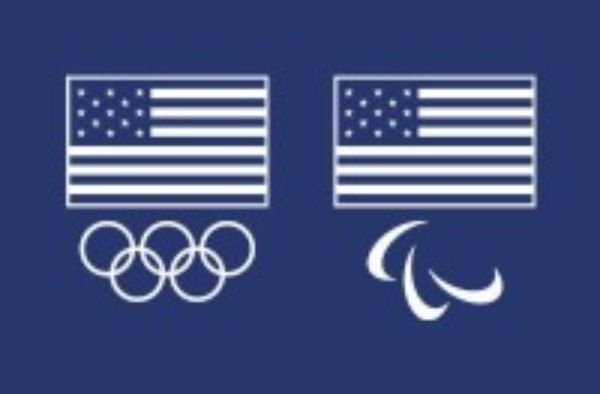In a major policy shift, the United States Olympic & Paralympic Committee (USOPC) has announced that transgender women will no longer be eligible to compete in women’s categories at the Olympic and Paralympic Games. This move aligns with an executive order issued earlier this year and has stirred significant debate across the sporting and LGBTQ+ communities.

What Led to the Ban? Understanding the Policy Shift
The recent decision follows President Donald Trump’s February executive order titled “Keeping Men Out of Women’s Sports,” which mandated that participation in women’s sports be limited to individuals assigned female at birth. As a federally chartered organization, the USOPC stated it must comply with these federal expectations to ensure fair and safe competition environments for women athletes.
In a memo sent to Team USA stakeholders, USOPC President Gene Sykes and CEO Sarah Hirshland emphasized the organization’s commitment to adhering to the executive order and updating policies in collaboration with national governing bodies (NGBs), the International Olympic Committee (IOC), and the International Paralympic Committee (IPC).
Key Points of the USOPC Policy Update
- The ban on transgender women competing in women’s Olympic and Paralympic events is now official.
- The policy avoids explicitly naming transgender athletes but references Executive Order 14201.
- All NGBs must revise their rules to align with the new USOPC guidelines.
- Transgender women may compete only in men’s categories, according to some updated sport-specific rules, such as those announced by USA Fencing.
- The USOPC highlighted its goal to maintain a “fair and safe competition environment” consistent with federal and legal mandates.
Reactions and Controversies Surrounding the Ban
The policy has garnered a mixed response from various corners:
- Supporters argue that this measure restores fairness in women’s sports, protecting opportunities for female athletes.
- Critics and Advocacy Groups have strongly condemned the decision. For instance, Lambda Legal called the policy change “cowardice personified,” stating it ignores scientific evidence and harms transgender athletes and communities.
- The National Women’s Law Center criticized the USOPC for surrendering to political pressure, highlighting the negative impact on the rights and dignity of transgender athletes.
- Some sports organizations are adjusting their own transgender participation rules to comply with the USOPC mandate, leading to confusion and division in the sports world.
- International bodies like the IOC and World Athletics continue to adopt more inclusive policies, putting the US apart from international trends.
What This Means for Transgender Athletes and Women’s Sports
- Transgender women athletes face significant barriers to competing in women’s divisions at the highest level in the U.S. Olympic system.
- The ruling also extends indirectly to youth, collegiate, and masters level sports through associated NGBs.
- Critics warn that the policy could drive talented transgender athletes out of competitive sports altogether.
- The invocation of Title IX and reinterpretation of sex in sports under federal law form the legal backbone of the USOPC policy’s rationale.
- The ban is expected to influence athlete eligibility rules leading up to the 2028 Los Angeles Olympics.
What’s Next? The Road Ahead for Inclusion and Fairness
The USOPC has pledged ongoing collaboration with international bodies and its own stakeholders to evaluate and adjust policies to balance fairness and inclusion. However, debate continues over:
- The scientific basis and fairness of excluding transgender women athletes.
- Legal challenges that may arise from advocacy groups on grounds of discrimination.
- The future of gender categories in sport, with calls for nuanced and sport-specific solutions.
FAQs: USOPC Transgender Women Ban Explained
1. Why did the USOPC ban transgender women from competing in women’s sports?
The USOPC revised its policy to comply with President Trump’s executive order “Keeping Men Out of Women’s Sports,” mandating participation be limited to athletes assigned female at birth.
2. Are transgender women allowed to compete in men’s sports categories?
Some sports, like USA Fencing, have clarified that transgender women may compete only in men’s divisions under updated rules aligned with the USOPC policy.
3. How has the LGBTQ+ community reacted to the ban?
Many advocacy groups have condemned the policy for being discriminatory and harmful to transgender athletes’ rights and well-being.
4. Does this policy apply to all levels of sport?
The USOPC oversees Olympic and Paralympic teams but requires National Governing Bodies to update their policies, which affects youth, collegiate, and other levels tied to those bodies.
5. How does this policy align with international sporting bodies’ rules?
The USOPC’s stance is stricter than many international organizations like the IOC, which allow transgender athletes to compete under specific medical and eligibility criteria.
Conclusion
The USOPC’s decision to bar transgender women from competing in women’s Olympic and Paralympic sports under federal mandate marks a significant and controversial turning point in U.S. sports policy. While aiming to preserve fairness in women’s categories, the ban has sparked widespread debate about inclusion, rights, and the evolving landscape of gender in athletics. As the sports community navigates these complex issues, the conversation around transgender participation in sports remains one of the most contentious in modern athletic and social discourse.


